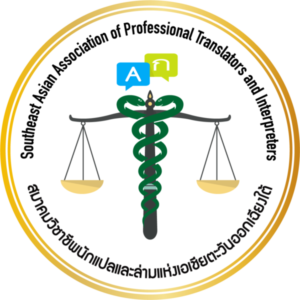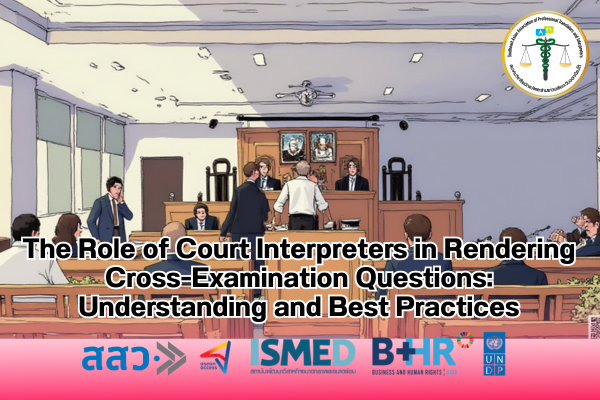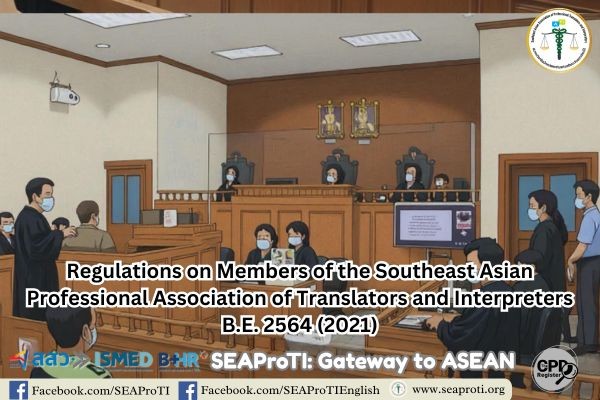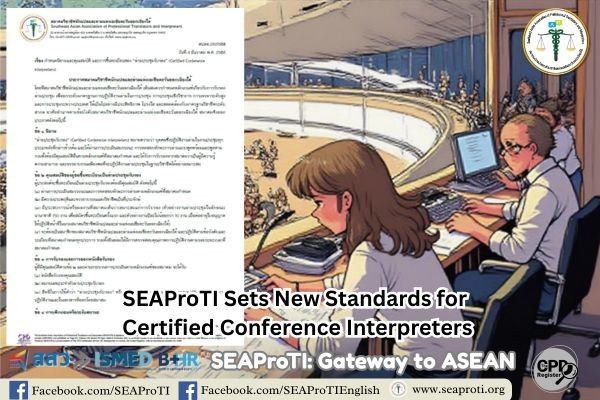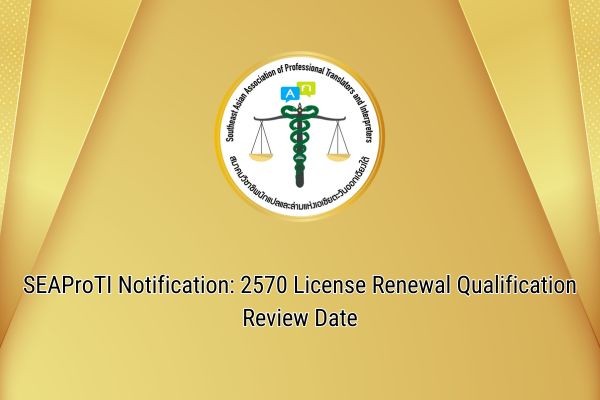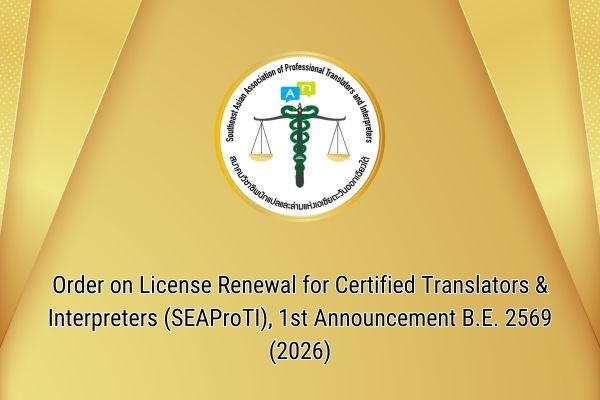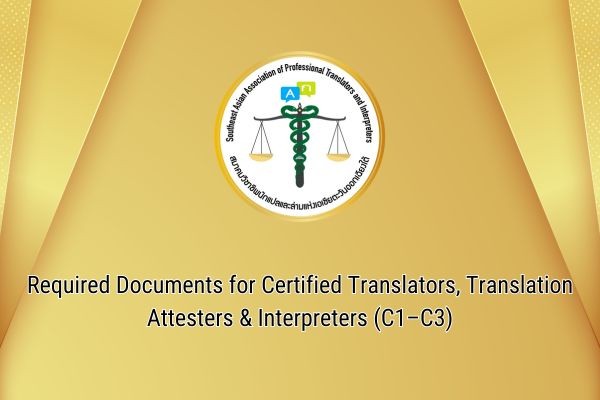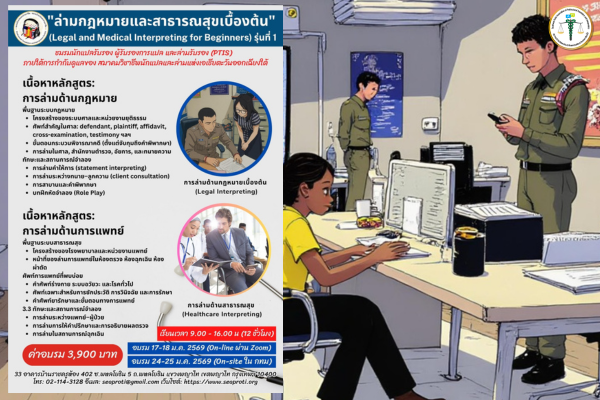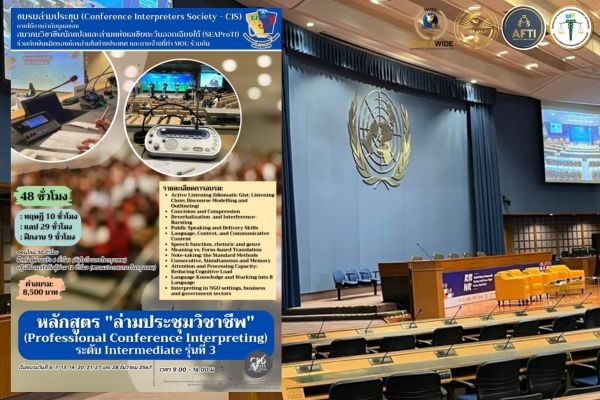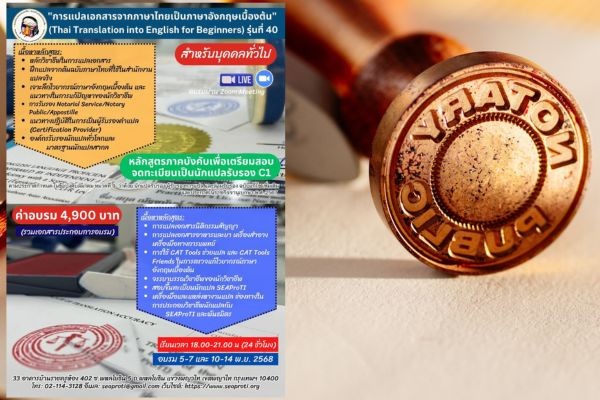The Role of Court Interpreters in Rendering Cross-Examination Questions:
Understanding and Best Practices
Abstract
This article explores the critical role of court interpreters during cross-examination, a key component in adversarial legal systems. It argues that interpreters must not only translate words accurately but also understand the strategies, structures, and intentions embedded within cross-examination questions. Different types of such questions—often strategic, coercive, and linguistically complex—are analyzed in detail. The article proposes practical guidelines and cognitive strategies for interpreters to ensure accurate, faithful, and impartial delivery of cross-examination questions, thereby supporting the integrity of judicial proceedings.
Keywords: court interpreting, cross-examination, legal process, adversarial system, forensic linguistics
Introduction
In adversarial legal systems, cross-examination serves as a vital mechanism for challenging witness credibility and uncovering the truth (Roberts & Zuckerman, 2010). Cross-examination questions are often carefully constructed to constrain the witness’s response, suggest conclusions, and pressure inconsistencies. For interpreters, this presents a unique challenge: to preserve the linguistic force and legal function of these questions without alteration, omission, or dilution. Court interpreters must be attuned to both the surface meaning and the underlying rhetorical tactics employed in cross-examination (Hale, 2004).
Types of Cross-Examination Questions Interpreters Must Understand
1. Single-Fact Questions
These are closed-ended questions designed to elicit a “yes” or “no” answer without elaboration.
Example: “You were at the scene at 8:00 p.m., correct?”
Interpreters must resist the urge to clarify or soften the question, and should never rephrase it in a way that opens the door to explanation (Hale, 2004).
2. Questions Based on Presumed Answers
Attorneys often ask questions they already know the answer to, aiming to catch the witness in a contradiction. Interpreters should avoid presenting these as neutral inquiries and must maintain the original intention.
3. Narrative-Based Questions Framed as a Single Sentence
Some cross-examination questions present a chain of facts in a single sentence to compel the witness to agree or deny.
Example: “You agree, don’t you, that you did not report the incident but instead left the country the next day?”
These must be interpreted in full and with accuracy, demanding a high level of memory and processing skill (Berk-Seligson, 2009).
4. Structured Openings and Closings
Phrases like “Isn’t it true that…” or “Would you agree that…” are crafted to apply pressure. Interpreters must retain these structures, not dilute them into general questions.
5. Leading Questions
These questions suggest the answer within the question itself, often with a tone of persuasion.
Example: “You saw him take the item, didn’t you?”
Interpreters must ensure that the leading nature is retained and not neutralized in translation.
6. Trap Questions
These are designed to corner the witness into contradicting a previous statement. Interpreters must be highly attentive to prior testimony and ensure consistent rendering to avoid unintended contradictions.
7. Dead-End or Final Questions
These questions aim to close a line of inquiry.
Example: “You have no other evidence, do you?”
Interpreters must maintain the finality and assertiveness of such questions.
Best Practices for Interpreters During Cross-Examination
- Preserve linguistic structure and intent
Do not summarize or modify the question, even if it sounds coercive (Mikkelson, 2017).
- Employ active listening and short-term memory techniques
Cross-examination questions can be lengthy and complex. Interpreters should train in chunking and cognitive retention.
- Prevent misunderstanding by avoiding over-translation
For example, “I thought I had authority to sign” must be translated as “I thought…”, not as a definitive statement like “I had authority…”, which could misrepresent legal nuance.
- Maintain neutrality and emotional detachment
Cross-examinations can be tense. Interpreters must remain impartial and unaffected by tone or content.
Conclusion
Court interpreters play a vital role in preserving the integrity of the cross-examination process. They must understand not just the language but the legal and rhetorical functions behind each question. Failure to properly interpret cross-examination may not only disadvantage a party but also distort the judicial process. Legal interpreting training programs must include specialized modules on adversarial questioning, and professional standards must be reinforced to ensure interpreters are equipped to navigate these high-stakes scenarios with accuracy and integrity.
References
- Berk-Seligson, S. (2009). Court interpreting. In M. Baker & G. Saldanha (Eds.), Routledge Encyclopedia of Translation Studies (2nd ed., pp. 65–69). Routledge.
- Hale, S. (2004). The Discourse of Court Interpreting: Discourse practices of the law, the witness and the interpreter. John Benjamins.
- Mikkelson, H. (2017). Introduction to Court Interpreting. Routledge.
- Roberts, P., & Zuckerman, A. (2010). Criminal Evidence (2nd ed.). Oxford University Press.
SEAProTI’s certified translators, translation certification providers, and certified interpreters:
The Southeast Asian Association of Professional Translators and Interpreters (SEAProTI) has officially announced the criteria and qualifications for individuals to register as “Certified Translators,” “Translation Certification Providers,” and “Certified Interpreters” under the association’s regulations. These guidelines are detailed in Sections 9 and 10 of the Royal Thai Government Gazette, issued by the Secretariat of the Cabinet under the Office of the Prime Minister of the Kingdom of Thailand, dated July 25, 2024, Volume 141, Part 66 Ng, Page 100. the Royal Thai Government Gazette
บทบาทของล่ามในการถ่ายทอดคำถามค้านในกระบวนการพิจารณาคดี: ความเข้าใจและแนวทางปฏิบัติ
5 กรกฎาคม 2568, กรุงเทพมหานคร – บทความนี้มุ่งวิเคราะห์บทบาทของล่ามในศาลโดยเฉพาะในการถ่ายทอด “คำถามค้าน” ซึ่งเป็นกลยุทธ์สำคัญในการไต่สวนพยานในระบบกล่าวหา (adversarial system) โดยแสดงให้เห็นว่า ล่ามจำเป็นต้องเข้าใจโครงสร้าง กลวิธี และเจตนาของคำถามค้าน เพื่อถ่ายทอดได้อย่างถูกต้อง ครบถ้วน และไม่ละเลยความหมายเชิงวาทศิลป์ซึ่งอาจกระทบต่อผลของคดี บทความนี้วิเคราะห์ประเภทของคำถามค้าน รวมถึงข้อควรระวังในการถ่ายทอด พร้อมเสนอแนวทางการฝึกฝนสำหรับล่ามในศาลยุติธรรม
คำสำคัญ: ล่ามในศาล, คำถามค้าน, กระบวนการยุติธรรม, การตีความทางกฎหมาย, การสอบพยาน
บทนำ
ในกระบวนการยุติธรรม โดยเฉพาะในระบบกล่าวหา (adversarial system) การสอบพยานฝ่ายตรงข้ามหรือ “การถามค้าน” (cross-examination) มีบทบาทสำคัญในการพิสูจน์ข้อเท็จจริงและทดสอบความน่าเชื่อถือของพยาน (Roberts & Zuckerman, 2010) ข้อความถามค้านมักถูกออกแบบอย่างมีชั้นเชิงเพื่อจำกัดคำตอบ ตัดโอกาสในการอธิบาย และชี้นำพยาน ล่ามจึงมีบทบาทสำคัญในการถ่ายทอดคำถามเหล่านี้อย่างแม่นยำ โดยต้องรักษาเจตนารมณ์ของผู้ถามไว้อย่างครบถ้วน
ประเภทของคำถามค้านที่ล่ามต้องเข้าใจ
1. การตั้งคำถามด้วยข้อเท็จจริงเดียว
คำถามลักษณะนี้บังคับให้พยานตอบเพียง “ใช่” หรือ “ไม่ใช่” โดยไม่มีโอกาสขยายความ ตัวอย่างเช่น:
“คุณอยู่ในที่เกิดเหตุเวลา 20.00 น. ใช่หรือไม่?”
ล่ามต้องแปลโดยรักษาความชัดเจนของคำถาม และไม่เพิ่มเติมเนื้อหาใด ๆ ที่อาจเปิดช่องให้พยานอธิบายได้ (Hale, 2004)
2. การถามโดยต้องรู้คำตอบก่อนเสมอ
ทนายความจะตั้งคำถามที่พยานเคยตอบไว้แล้วในคำให้การก่อนหน้า เพื่อบีบให้ตอบตรงกัน หรือล่อให้ตอบขัดแย้ง ล่ามต้องระวังไม่แปลคลาดเคลื่อนซึ่งอาจทำให้พยานตกเป็นเป้าโดยไม่ตั้งใจ
3. การวางรูปคดีด้วยประโยคเดียว
คำถามลักษณะนี้มักมีเนื้อหายาวและครอบคลุมหลายประเด็น เช่น:
“คุณยอมรับใช่ไหมว่า หลังจากเหตุการณ์เกิดขึ้น คุณไม่ได้แจ้งตำรวจทันทีแต่กลับเดินทางออกนอกประเทศในวันรุ่งขึ้น”
ล่ามต้องฝึกทักษะการฟังและการจำ เพื่อแปลให้ได้ครบถ้วน (Berk-Seligson, 2009)
4. การขึ้นต้นและลงท้ายของคำถาม
การใช้วลีเช่น “จริงหรือไม่ว่า…”, “คุณยืนยันได้หรือไม่ว่า…” มีผลต่อการรับรู้ของพยาน ล่ามต้องคงไว้ซึ่งโครงสร้างเดิม มิใช่แปลงเป็นคำถามกลาง ๆ
5. การใช้คำถามนำ (leading questions)
คำถามที่แฝงคำตอบไว้แล้ว เช่น “คุณก็เห็นด้วยใช่ไหมว่า…” มีเจตนาโน้มน้าว ล่ามต้องแปลอย่างมีสำนึกในบทบาทเพื่อไม่ลดน้ำเสียงการชี้นำ
6. การดักคอพยาน (trap questions)
ทนายอาจใช้คำถามเพื่อย้อนกลับไปจับผิดคำให้การเดิม ล่ามจึงต้องมีทักษะการวิเคราะห์ความสอดคล้องของคำตอบและจำบริบทได้ดี
7. คำถามตาย (closed/final questions)
คำถามที่ปิดประเด็น เช่น “คุณไม่มีหลักฐานอื่นใช่หรือไม่?” มีวัตถุประสงค์ในการตอกย้ำข้อจำกัดของพยาน ซึ่งล่ามต้องถ่ายทอดให้ชัดเจน
แนวทางการปฏิบัติของล่ามในการถามค้าน
- รักษาความแม่นยำของโครงสร้างภาษาต้นทาง
ไม่สรุปหรือปรับคำถามให้อ่อนลงแม้จะรู้สึกว่าเป็นคำถามบีบคั้น (Mikkelson, 2017)
- ฝึกฟังแบบ active listening และความจำระยะสั้น
เนื่องจากคำถามอาจยาวและซับซ้อน ล่ามจึงต้องฝึกจดจำข้อมูลในระยะเวลาสั้นและแบ่งหน่วยความหมายได้อย่างมีประสิทธิภาพ
- ระวังไม่ให้พยานเข้าใจผิดจากการแปลคลาดเคลื่อน
เช่น คำว่า “I thought I had authority to sign” ต้องแปลให้ตรงว่า “ฉันคิดว่าฉันมีอำนาจลงนาม” ไม่ใช่ “ฉันมีอำนาจลงนาม” ซึ่งเป็นการสรุปเกินจริง
- ใช้ท่าทีเป็นกลางและควบคุมอารมณ์
คำถามค้านมักรุนแรง ล่ามต้องไม่เอาอารมณ์เข้าไปเกี่ยวข้องและรักษาสภาวะการแปลให้เสมอภาคทั้งสองฝ่าย
บทสรุป
ล่ามในศาลมิใช่เพียงผู้ถ่ายทอดภาษา แต่เป็นผู้ที่ต้องมีความเข้าใจในโครงสร้างทางกฎหมายและวาทศิลป์ทางกระบวนการยุติธรรมอย่างลึกซึ้ง โดยเฉพาะในการถามค้านที่เน้นความกดดันและความแม่นยำ การฝึกอบรมล่ามจึงควรบรรจุหลักสูตรเฉพาะทางเกี่ยวกับคำถามค้าน และควรกำหนดมาตรฐานวิชาชีพในการปฏิบัติหน้าที่ เพื่อให้เกิดความยุติธรรมอย่างแท้จริงต่อทุกฝ่ายในกระบวนการพิจารณาคดี
บรรณานุกรม
- Berk-Seligson, S. (2009). Court interpreting. In M. Baker & G. Saldanha (Eds.), Routledge Encyclopedia of Translation Studies (2nd ed., pp. 65–69). Routledge.
- Hale, S. (2004). The Discourse of Court Interpreting: Discourse practices of the law, the witness and the interpreter. John Benjamins.
- Mikkelson, H. (2017). Introduction to Court Interpreting. Routledge.
- Roberts, P., & Zuckerman, A. (2010). Criminal Evidence (2nd ed.). Oxford University Press.
เกี่ยวกับนักแปลรับรอง ผู้รับรองการแปล และล่ามรับรองของสมาคมวิชาชีพนักแปลและล่ามแห่งเอเชียตะวันออกเฉียงใต้
สมาคมวิชาชีพนักแปลและล่ามแห่งเอเชียตะวันออกเฉียงใต้ (SEAProTI) ได้ประกาศหลักเกณฑ์และคุณสมบัติผู้ที่ขึ้นทะเบียนเป็น “นักแปลรับรอง (Certified Translators) และผู้รับรองการแปล (Translation Certification Providers) และล่ามรับรอง (Certified Interpreters)” ของสมาคม หมวดที่ 9 และหมวดที่ 10 ในราชกิจจานุเบกษา ของสำนักเลขาธิการคณะรัฐมนตรี ในสำนักนายกรัฐมนตรี แห่งราชอาณาจักรไทย ลงวันที่ 25 ก.ค. 2567 เล่มที่ 141 ตอนที่ 66 ง หน้า 100 อ่านฉบับเต็มได้ที่: นักแปลรับรอง ผู้รับรองการแปล และล่ามรับรอง

